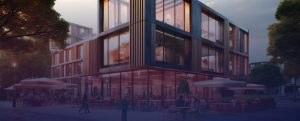Raleigh ranks second for the fastest-growing cities in the United States by Carolina Demography, with an annual population increase of two percent. The city is part of The Triangle (a term used to define the metro area, including Durham and Chapel Hill), known for its award-winning hotels, spas, food, museums, and university gardens. Raleigh has received numerous accolades and recognitions, including The Second Best Place to Live, 11th Best-Run City, Best Cities to Start a Career, and Best Places to Retire Early. Entering the pandemic in a strong position, Raleigh was cushioned from the unprecedented difficulties. The market’s retail vacancy rate, 3.1 percent, has fared better than the national average, as has rental growth, with a 6.4 percent increase year-over-year. Rental growth is anticipated to cool in the coming months, but the limited construction pipeline is expected to buoy rent performance. Essential retailers performed well through the pandemic, while non-essential retailers are showing signs of recovery, and significant developments are concentrated in Downtown. Grocery-anchored centers have sustained demand, with popular grocers such as Wegmans and Publix increasing net absorption through expansions within the market.
In this report, you’ll find various metrics on the Eastern North Carolina retail markets Raleigh, Fayetteville, Greensboro, and Greenville, including:
- Sales Volume
- Rent & Vacancy Trends
- Recent & Upcoming Developments










